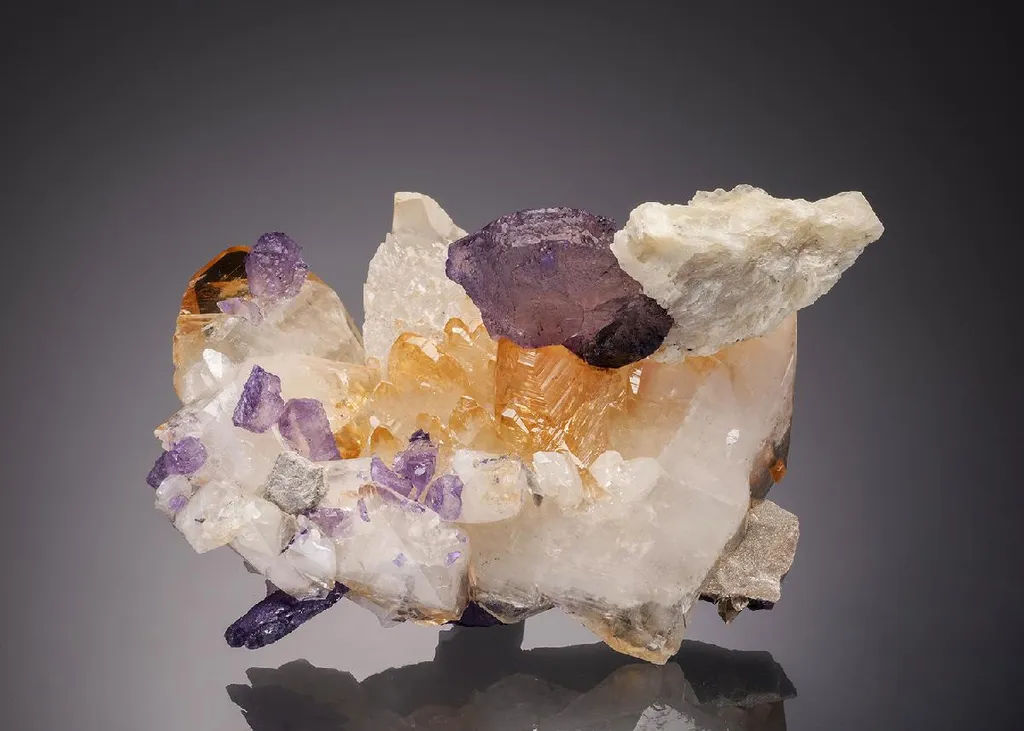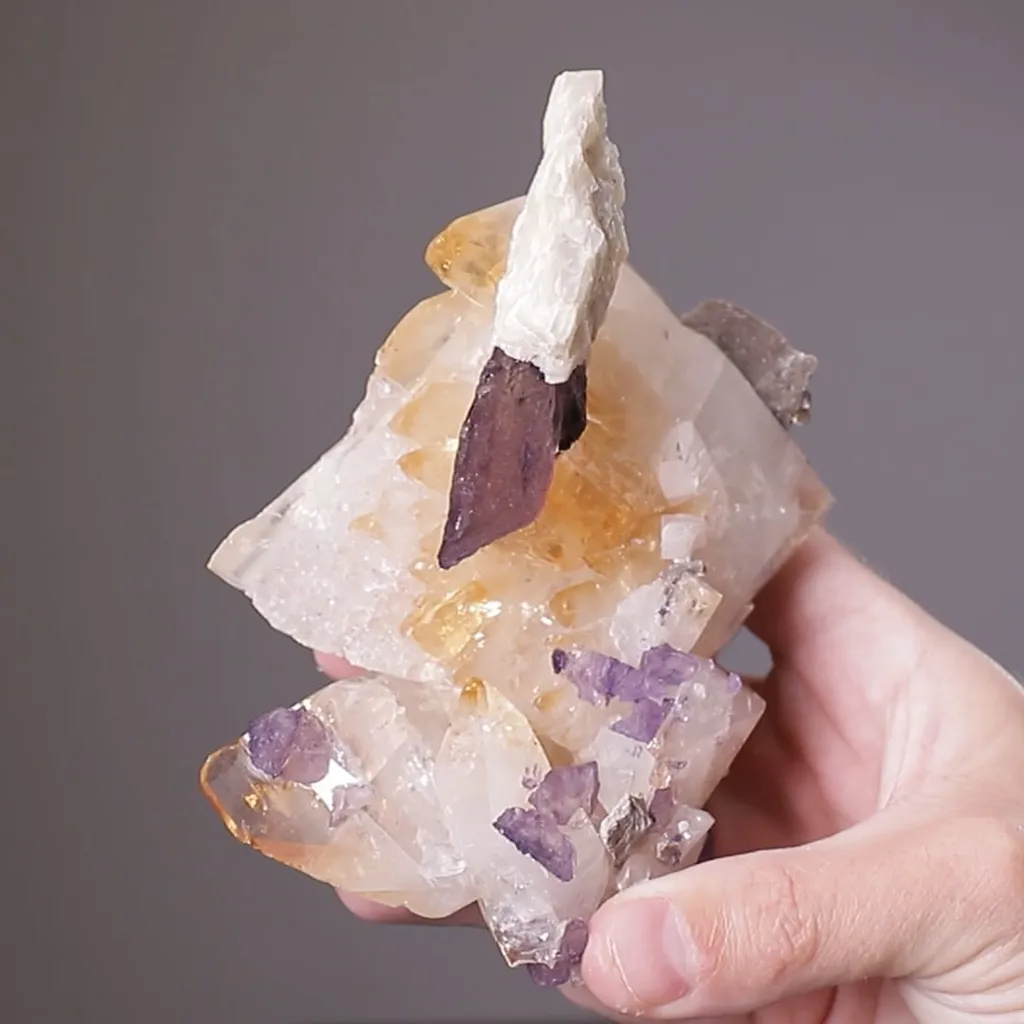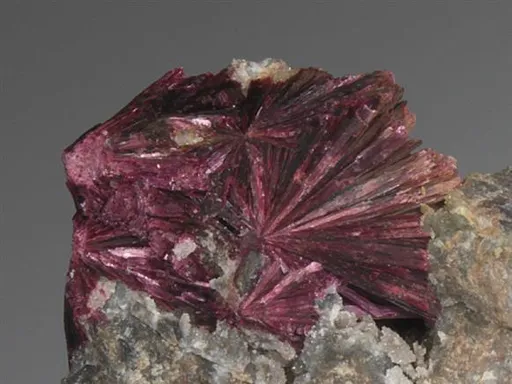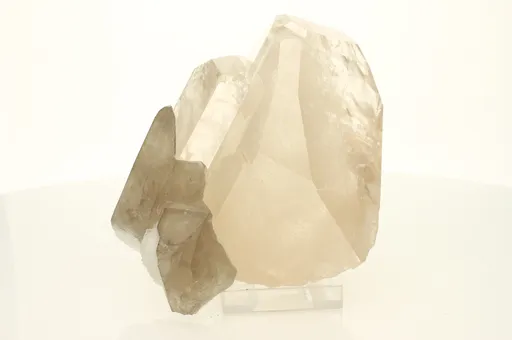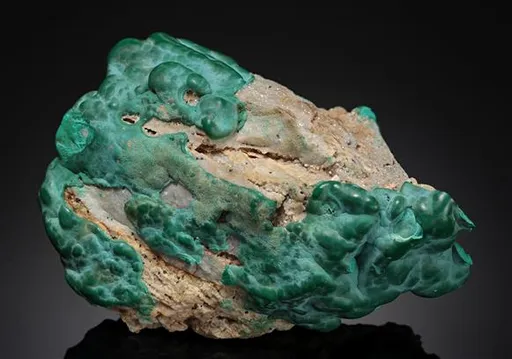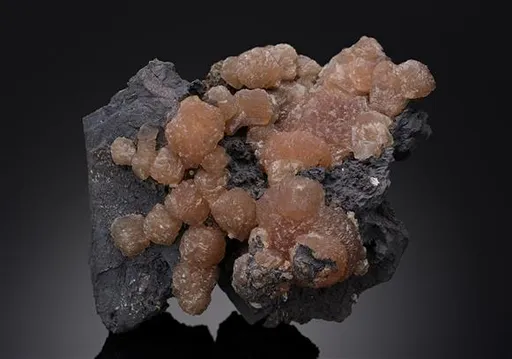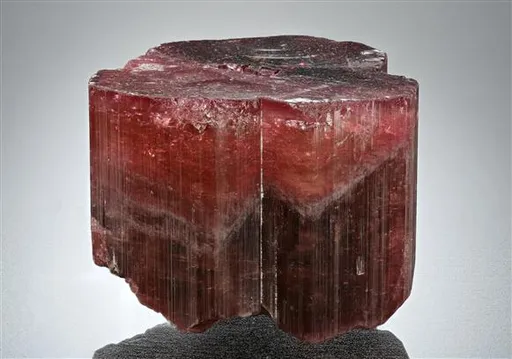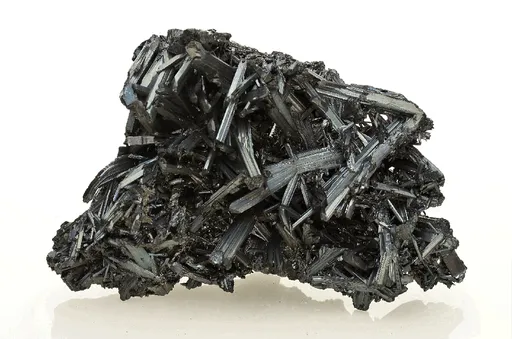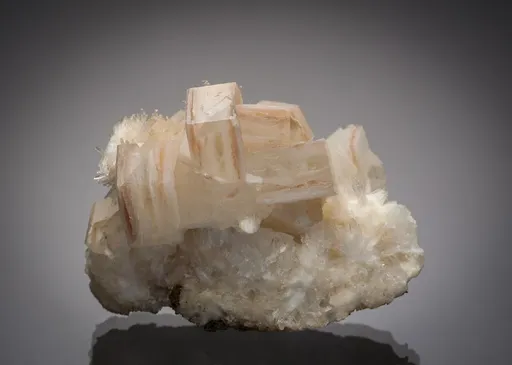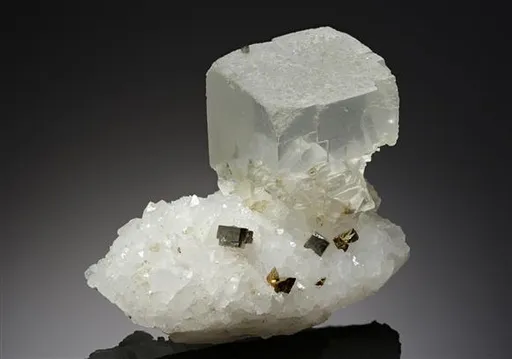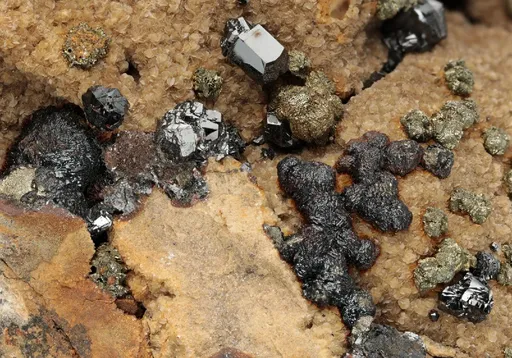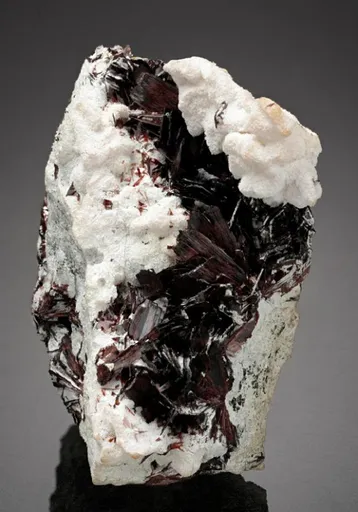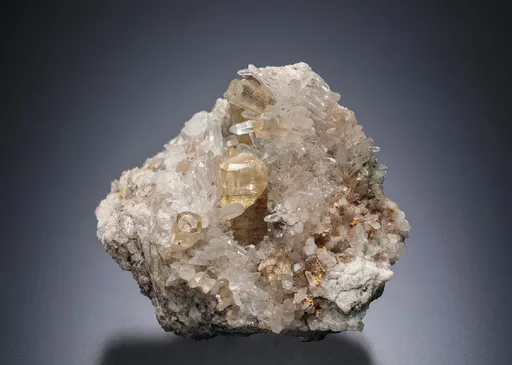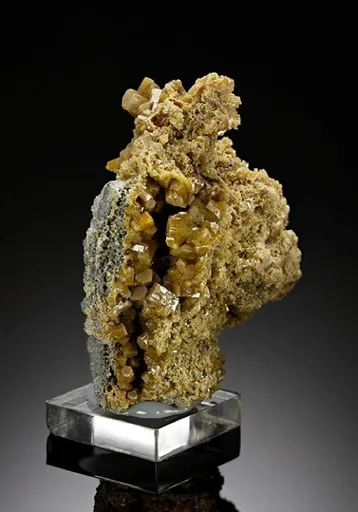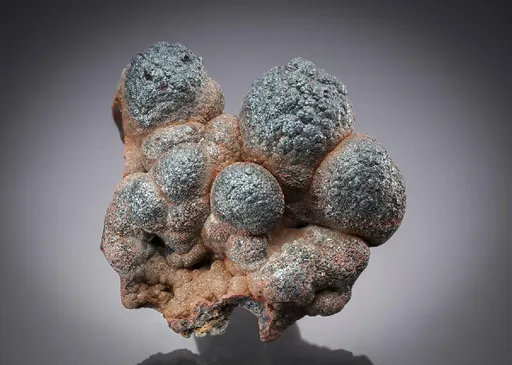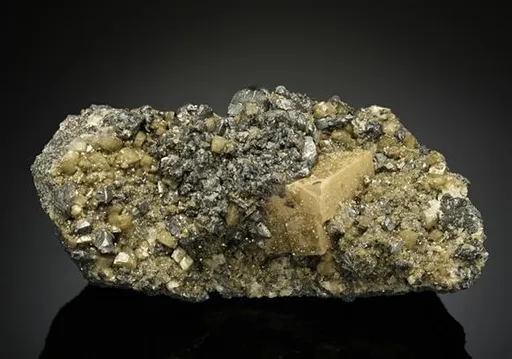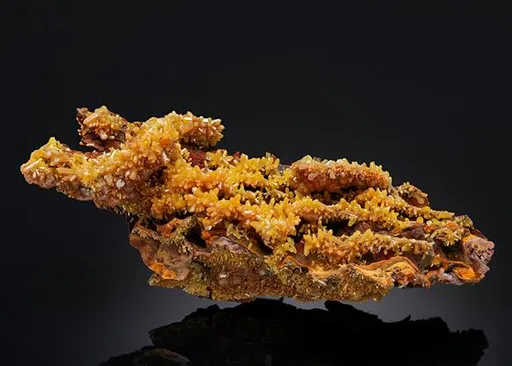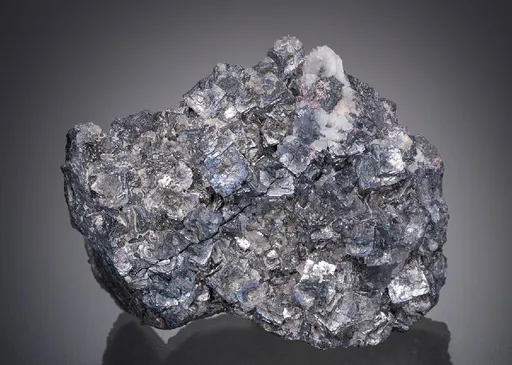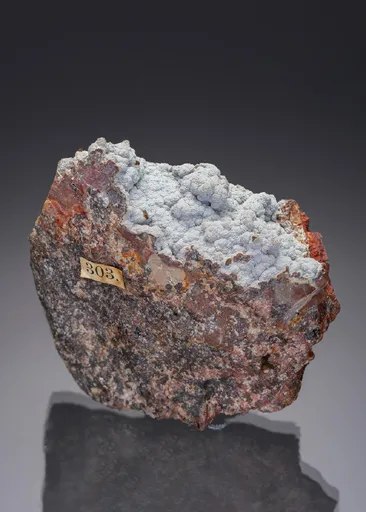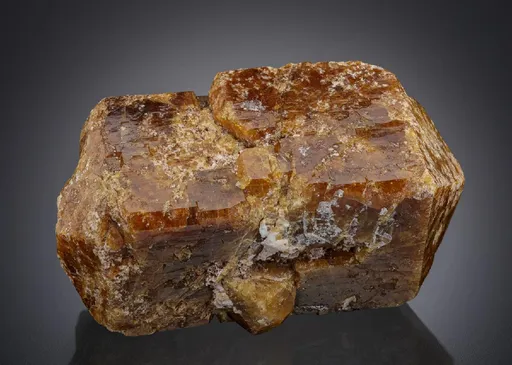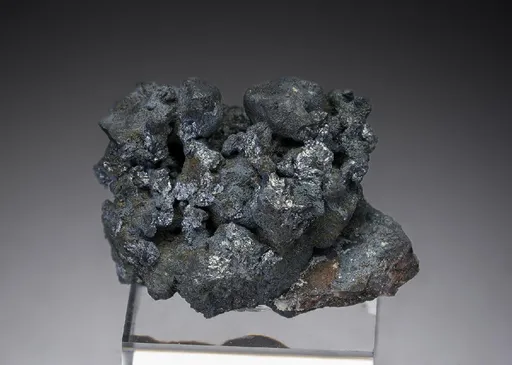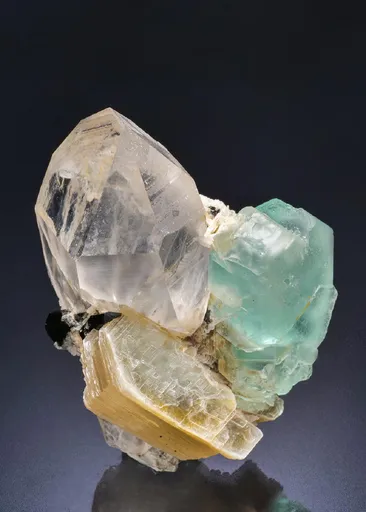I’ve been describing specimens for longer than I care to remember. Given the infinite variety in which minerals can form, this must be right at the top of the list of specimens for which words fail me. This reasonably large cabinet specimen is composed of Fluorite with Calcite plus Quartz and what I think is probably Celestine, is from the world-famous Elmwood mine at Carthage in Smith County, Tennessee. It is a complex and busy specimen highlighted by translucent blades and slivers of violet Fluorite, the largest ‘plate’ measuring 3.7 x 3.2 x 1 cm. Some of the Fluorite shows it originally crystallised as cubes, but these have long since been destroyed by some process of natural etching or localised erosion, leaving the strange assemblage of fragments we now see. The Fluorite sits on highly flattened scalenohedral Calcite crystals, colourless to milky white with mirror-like smooth surfaces and a brilliant glassy lustre. Characteristic of Elmwood, many of their terminations grade to an ice-clear, golden sherry. A 9 cm long sliver of light grey Quartzite matrix remains attached on one side and emanating from the largest Fluorite, a 4 cm long shard of either Celestine or strontium-bearing Baryte. An amazing specimen indeed!\n
